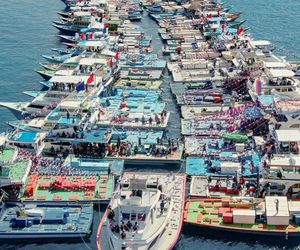Judge blames police negligence in acquittal of Rilwan abduction suspects
Judge Adam Arif reprimanded the authorities for glaring failures in the investigation and prosecution.

02 Aug 2018, 9:00 AM
Almost four years since the disappearance of Ahmed Rilwan, the criminal court has found two suspects not guilty of abducting the Maldives Independent journalist, blaming negligence by the police and prosecution.
“How could they? After taking all the witness testimony from the family and anonymous witnesses,” Rilwan’s sister Fathmath Shehenaz told the Maldives Independent after the verdict was delivered Thursday morning.
“We never really expected a conviction, we knew we wouldn’t get justice. But we cooperated with the authorities because we didn’t want them to be able to say we did not and blame us.”
Become a member
Get full access to our archive and personalise your experience.
Already a member?
Discussion
No comments yet. Be the first to share your thoughts!
No comments yet. Be the first to join the conversation!
Join the Conversation
Sign in to share your thoughts under an alias and take part in the discussion. Independent journalism thrives on open, respectful debate — your voice matters.




